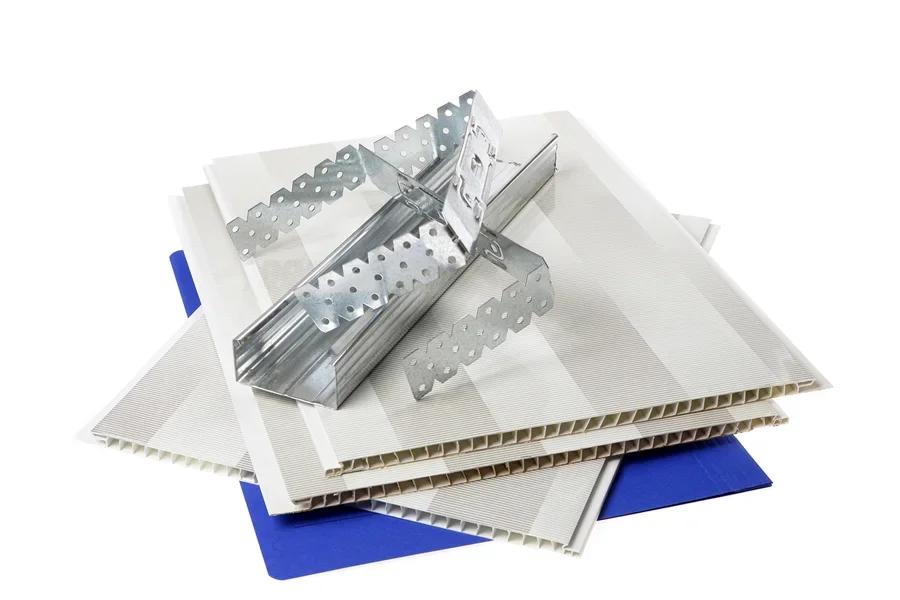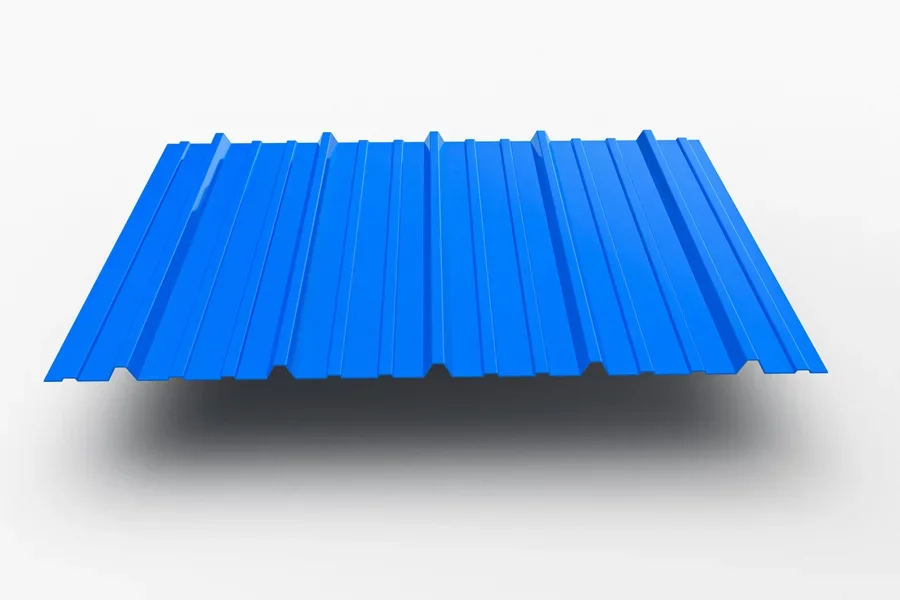Listen, nothing makes a room look messier faster than a ceiling full of clutter. People are looking for an easy solution that blocks noise, retains heat, and gives the space a clean appearance without the need for a drywall team.
That’s where the ceiling panel comes in. They snap into place quickly, making the whole room feel fresh again. For retailers, this is a great way to boost sales by offering the panels people are already searching for.
Let’s take a closer look. In this guide, you’ll find five top ceiling panel styles for 2026, along with four easy tips to help you choose the right ones to keep in stock.
Table of Contents
The ceiling panel market report
5 best ceiling panel types to stock
1. PVC ceiling panels
2. Styrofoam ceiling tiles
3. Metal (tin and aluminum) panels
4. Acoustic ceiling panels
5. Drop-ceiling grid panels
4 things to know before choosing ceiling panels to sell
1. Room purpose and traffic
2. Budget and profit mix
3. Size and grid match
4. Maintenance and replacement ease
Bottom line
The ceiling panel market report
The ceiling panel (also called ceiling tiles) market is growing, and it’s easy to see why. Recent reports indicate that the market is currently valued at USD 8.14 billion and is expected to double to roughly USD 14.69 billion by 2032, resulting in a steady annual growth rate of 7.6%.
Asia-Pacific already owns the most significant slice of that pie, holding about 38% of global revenue, thanks to a construction boom in China, India, and fast-growing cities across Southeast Asia. North America is catching up quickly as home-remodeling budgets rise; the report expects the U.S. alone to top USD 3.2 billion by 2032.
The study lists three significant forces driving sales. First, companies and homeowners want “green” buildings, so they choose lightweight tiles made from mineral wool or recycled metal that reduce energy use.
Second, steady growth in new hospitals, offices, and retail stores continues to keep big orders flowing. Finally, producers are launching clip-in panels that install in hours, slicing labor costs and making quick makeovers popular.
5 best ceiling panel types to stock
1. PVC ceiling panels

PVC ceiling panels are as light as a feather, with each board coming a small ridge on one side and a corresponding slot on the other, allowing the pieces to fit together like pieces of a puzzle.
Installation is simple: simply slide the ridges into each slot, and tap into place, while the smooth plastic surface is easy to clean with a damp cloth.
Best of all, dust cannot get in, which means a tidier space. These panels come in plain white, simple patterns, or wood-grain prints, offering users numerous style choices without the added weight or trouble of extra paint.
2. Styrofoam ceiling tiles

If one panel checks every box for budget-conscious buyers, it’s styrofoam ceiling tiles. These ultra-light foam squares provide consumers with a low-cost ceiling solution that moves quickly through the DIY aisle. Each tile can be glued directly onto an old ceiling without the need for metal rails or heavy tools.
Styrofoam ceiling tiles use the “peel-and-press” method, which saves customers time, resulting in fewer return questions at your desk. These tiles come packed in thin, flat boxes that can be stacked on an endcap, shipped cheaply, and lifted without a pallet jack.
Since the material accepts almost any wall paint, shoppers can grab extra sets to match new color trends, earning repeat sales.
3. Metal (tin and aluminum) panels

Pressed-metal panels add a “wow” factor that home and business owners will pay extra for. Each thin sheet of tin or aluminum features a raised pattern of “vintage swirls,” “clean squares,” or “hammered dots” that snaps into a basic wood strip or drop grid.
The shiny surface wipes clean with a damp cloth, so it won’t attract stains. And because the panels are lightweight, you can stack dozens in one display bin without bowing a shelf. With this, businesses can offer matching trim pieces and spray primers on the side.
4. Acoustic ceiling panels

It’s hard to concentrate when sounds reverberate around a room. That’s why offices, schools, and clinics often use acoustic ceiling panels that absorb sound and make spaces quieter.
For retailers, quiet ceilings are an easy upsell. The tiles drop into the same two-by-two or two-by-four grid that holds ordinary boards, so contractors do not need specific tools for installation. Another highlight of this ceiling panel is that it comes in different thicknesses and edge styles, which caters to both budget jobs and premium projects.
Additionally, businesses can easily increase the average order size and boost repeat sales by offering boxed bundles with matching grid rails and LED troffer lights.
5. Drop-ceiling grid panels

Drop-ceiling panels sit in a metal “T-bar” frame that hangs a few inches below the ceiling above. Builders like this setup because the tiles lift out in seconds, letting them reach pipes, wires, or ductwork, then drop back in with no mess. That easy access means fewer angry calls when something leaks or needs rewiring.
For businesses, this is another attractive type of ceiling panel to stock as it can be sold in pieces, including the main rails, cross-tees, hanger wire, and tiles, as well as packaged together as a bundle.
Retailers can also stock standard two-by-two and two-by-four-foot tiles, then throw in extra rails for last-minute add-ons to become the one-stop shop contractors count on.
4 things to know before choosing ceiling panels to sell
1. Room purpose and traffic
When it comes to ceiling panels, it’s different strokes for different folks. Busy rooms like kitchens need durable ceilings that handle steam, grease, and movement. However, quieter spaces, like bedrooms, don’t need as much. So, it’s best to stock up on strong PVC or metal panels for high-traffic areas, and foam tiles for calm ones.
2. Budget and profit mix
No doubt, some shoppers want the lowest price, while others spend more on looks or sound control. Hence, businesses must stock a good-better-best range for wider reach: foam tiles for budget buyers, PVC for mid-range, and metal for premium.
3. Size and grid match
Typically, ceiling projects slow down when the tile size and grid type don’t match. So, retailers should consider stocking two-by-two and two-by-four panels, as well as the right T-bar rails. A tip is for retailers to add shelf signs indicating which items fit together. After all, quick and precise pairing means fewer returns, faster checkout, and smoother installs – especially on busy sales days.
4. Maintenance and replacement ease
Businesses should avoid ceilings that need special cleaners or complete repainting. And the reason is simple: consumers prefer ceiling panels that wipe clean and lift out one by one with ease. Also, easy care cuts long-term costs.
Bottom line
Ceiling panels solve the noisy, ugly ceiling problem in a snap, and the right mix on your shelf means you can help almost any customer, whether a home DIYer or pro contractor, walk out ready to install.
Remember to consider the four factors in this article before every purchase order, store extra cartons for quick swaps, and turn unused ceiling space into a steady profit stream.
Finally, are you wondering what fresh style ideas your buyers will ask for next? Read about coffered ceilings here to stay one step ahead of the 2026 remodeling wave.




